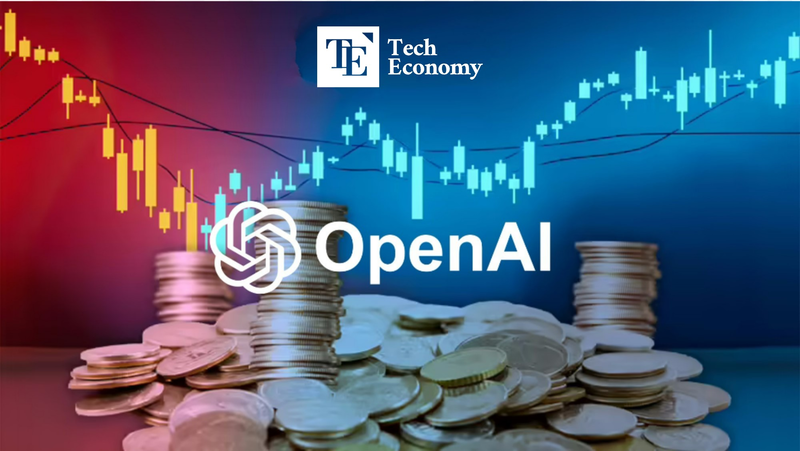"From Alliance to Rupture": OpenAI–Microsoft Conflict Escalates, the End of Profitless Collaboration
Input
Modified
OpenAI: “Partnership Restructuring Is Inevitable” Warning Signs of a Trust Breakdown Emerging Across the Board Microsoft’s Offerings Deemed ‘Below Expectations’

Once celebrated as the crown jewel of strategic alliances in the AI industry, the partnership between OpenAI and Microsoft is now teetering on the edge of collapse. Behind polished public statements and joint product announcements, the relationship has been quietly eroding—undermined by years of structural imbalance, unfulfilled expectations, and diverging visions of the future. What began as a union of capital and innovation has deteriorated into a power struggle defined by mistrust, lopsided returns, and technical grievances.
Now, OpenAI is proposing a dramatic shift in the nature of its partnership with Microsoft—offering a 33% equity stake in its restructured for-profit arm but withholding any claim to future profits. Microsoft, which has invested approximately $13 billion in the AI firm since 2019, sees this as an existential threat to its return on investment. As OpenAI courts new partners and edges away from its Azure dependency, the alliance appears to be unraveling before the industry’s eyes.
A Collision Course: From Investment to Antitrust Threats
The current fallout between OpenAI and Microsoft is not an isolated event but the culmination of an increasingly strained relationship. According to The Wall Street Journal, OpenAI has hit a wall in its attempt to gain Microsoft’s consent for a corporate restructuring plan that would transition its governance and financial model. In response to Microsoft’s resistance, OpenAI is reportedly preparing to approach U.S. regulatory authorities—specifically the Federal Trade Commission (FTC)—to determine whether the partnership’s exclusive provisions violate antitrust laws. If necessary, OpenAI has signaled its readiness to wage a public opinion battle that could tarnish Microsoft’s corporate image.
At the heart of the discord lies OpenAI’s controversial proposal: transfer a 33% stake in its newly formed for-profit unit to Microsoft, but deny the tech giant access to any future revenue. Under previous agreements, Microsoft had secured lucrative rights, including a 20% cut of potential profits estimated to reach $120 billion and exclusive access to AI model licenses through 2030. The new deal would require Microsoft to relinquish these hard-earned claims.
Unsurprisingly, Microsoft balked. Company officials viewed the proposal not as a negotiation but as an ultimatum—one that undermines the financial viability of Microsoft’s own AI-powered products, many of which are deeply intertwined with OpenAI’s models. Since its initial $1 billion investment in 2019, which secured exclusive rights to GPT-3, Microsoft steadily increased its stake, ultimately reaching a cumulative total of $13 billion. Yet in return, it now faces the prospect of owning non-dividend equity in a firm that is increasingly charting its own path.
From OpenAI’s perspective, the shift is a matter of survival. The nonprofit-parent/for-profit-subsidiary model was never designed to support perpetual revenue sharing. If OpenAI were to split profits with Microsoft, it argues, it would be left with insufficient funds to support its own operational growth. Complicating matters further is a looming December deadline: failure to complete its restructuring in time would cost OpenAI a promised $20 billion tranche of a $40 billion investment agreement with SoftBank.
In short, what began as a strategic partnership is devolving into a courtroom drama—one that may have implications far beyond the two companies involved.
Cracks in the Foundation: From Exclusivity to Strategic Drift
The rupture didn’t emerge overnight. Cracks in the OpenAI–Microsoft alliance began to show as early as late 2023, when OpenAI moved to renegotiate the terms of its cloud infrastructure agreement. Microsoft’s exclusive position as OpenAI’s cloud provider was reduced to a "right of first negotiation"—a subtle yet significant downgrade. While the move was publicly framed as a measure to ensure strategic flexibility, many industry insiders interpreted it as a signal that OpenAI was preparing to expand its technological alliances.
That suspicion has since proven correct. OpenAI recently entered into a major partnership with CoreWeave, a fast-growing cloud infrastructure provider known for its high-performance data centers powered by NVIDIA AI chips. This collaboration marks a decisive shift away from Microsoft's Azure ecosystem and serves as a clear indicator that OpenAI is pursuing a diversified cloud strategy to support the training of its next-generation models.
Microsoft, in response, has been aggressively reshaping its AI roadmap. It is accelerating development of its in-house open-source AI model, Phi-3, while expanding internal research teams and making high-profile hires. The aim is to reduce dependency on OpenAI, rebuild competitive cloud capabilities, and regain strategic leverage. The tech giant is pivoting from partnership to autonomy—adopting a more self-reliant model in anticipation of a decoupled future.
Despite public appearances of continued cooperation, the two firms are now pursuing parallel paths. OpenAI is seeking technological influence through internal innovation and diversified alliances. Microsoft is shifting its focus toward monetization and independence. Once the AI industry’s most potent partnership, theirs is now a fractured alliance held together by little more than legacy contracts and institutional momentum. Even if formal ties remain, the mutual trust and integration that once defined the relationship are unlikely to return.

Discontent from Within: Doubts, Imbalances, and Diverging Expectations
While external observers focus on profit-sharing disputes and governance models, the seeds of discord were planted much earlier—within OpenAI itself. For years, engineers and executives expressed dissatisfaction with Microsoft’s offerings, particularly Azure’s GPU clusters. The platform’s high latency, limited flexibility, and constrained autonomy were persistent pain points. It became commonplace within OpenAI to hear criticism that Microsoft’s technology packages "fell short of expectations." These frustrations ultimately pushed OpenAI to seek alternatives.
But technology was only one dimension of the discontent. The deeper problem lay in the structural framework of the partnership. OpenAI’s nonprofit-over-profit model was intended to ensure mission alignment and sustainability. However, its collaboration with Microsoft yielded diminishing returns: capital flowed in, but operational freedom was limited, and revenue remained negligible. Internally, the question gained urgency—why sustain a partnership that offered so little in financial or strategic benefit?
From Microsoft’s vantage point, the imbalance was just as stark—but in reverse. Despite pouring billions into OpenAI, it wielded little influence over the company’s strategic decisions. OpenAI’s board remains nonprofit in character, and key choices—such as model development and partner selection—have been made independently. Microsoft, in effect, was reduced to a technical vendor: a financier and cloud provider with no seat at the decision-making table.
The resulting conflict is not a case of sudden fallout but of long-term structural misalignment. OpenAI, though publicly portraying Microsoft as a strategic partner, increasingly designed its roadmap without MS input. Microsoft, in turn, found itself holding equity in a company that had no intention of sharing its future gains. With OpenAI now forging new alliances and Microsoft doubling down on internal AI infrastructure, the rupture looks irreversible.





















